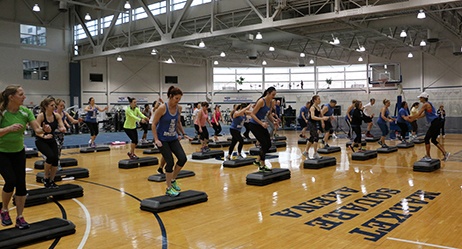 Step aerobics has been around for some time. We are all aware of its huge popularity in the 80’s, and while some may have thought it was dead and gone, many know it is alive and kicking! With the launch of Zumba® and other choreographed classes, most gyms around the US still have those famous Reebok® steps and have step classes going on at least once a week. Take a close look at NIFS on Tuesday nights and Saturday mornings and you'll see step classes are far from dead. In fact, they happen to be one of our most popular group fitness classes!
Step aerobics has been around for some time. We are all aware of its huge popularity in the 80’s, and while some may have thought it was dead and gone, many know it is alive and kicking! With the launch of Zumba® and other choreographed classes, most gyms around the US still have those famous Reebok® steps and have step classes going on at least once a week. Take a close look at NIFS on Tuesday nights and Saturday mornings and you'll see step classes are far from dead. In fact, they happen to be one of our most popular group fitness classes!
Where It All Started
Let us take a moment to look back and see how step was created. It is so much more than music and choreographed stepping and learning how it was created make it all the more interesting! In 1989 Gin Miller, a competitive gymnast injured her knee in a competition. As she sought advice from her doctor on some rehab tactics, he told her she should work to develop muscles around her knees by stepping up on something like a milk crate. And that is when Gin started to use her porch step and music for some low impact stepping, and step aerobics was born!
Benefits of Step
Like many classes out there, the benefits are more than what you see on the surface. And step absolutely has some benefits that will allow you to improve your overall fitness. Step is good because it is considered “low impact”, helping the stress on the joints and body to be minimal during the movements that are performed. It also burns calories and fat due to its mostly cardio-based format. Step helps to build cardiovascular and muscular endurance through upper and lower body movements and along with those movements comes improvement in coordination and agility! With the constant movement and stepping up on one leg, over time one can see improvements in their balance, not to mention how fun step aerobics can be if you are into the choreographed music style workouts!
As stone wash jeans, side ponytails, and high top sneakers seem to be coming around again, step has always been here and remains a staple of group exercise classes! In fact, I challenge you to step into NIFS on a Saturday morning this month and see that step is still reigning. You will find Rachel and her faithful followers doing what looks like the impossible, but don’t be intimidated! Just step (pun intended) in and go with the flow, it will only be a matter of time before you master the moves and get into the fun!
This blog was written by Amanda Bireline, Fitness Center Manager. To find out more about the NIFS bloggers, click here.


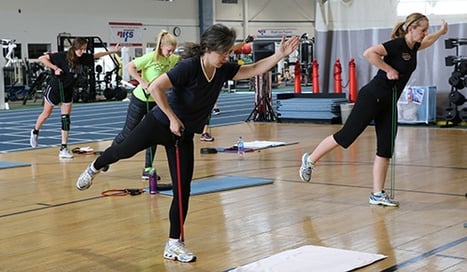 If you take a few minutes to google the various types of fitness training out there, you will come up with a list of about 10 different ones, and then 10 more different variations of each of those. And each year more and more “fitness trends” come out, making it quite confusing for the consumer as to what to choose and where to start. It can be confusing and even frustrating choosing what is right for you and your body.
If you take a few minutes to google the various types of fitness training out there, you will come up with a list of about 10 different ones, and then 10 more different variations of each of those. And each year more and more “fitness trends” come out, making it quite confusing for the consumer as to what to choose and where to start. It can be confusing and even frustrating choosing what is right for you and your body. 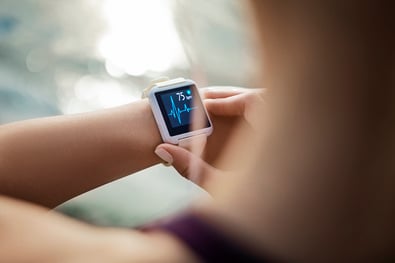 This type of training is specific to each individual and their personal zones. You can read more
This type of training is specific to each individual and their personal zones. You can read more 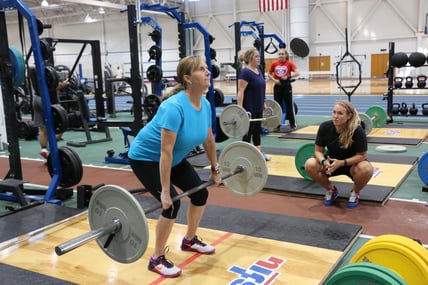 Strength training typically is done with heavy weight but can be done with lighter ones as well. This style of training is directly associated with Newton’s law: mass x acceleration = force.
Strength training typically is done with heavy weight but can be done with lighter ones as well. This style of training is directly associated with Newton’s law: mass x acceleration = force. 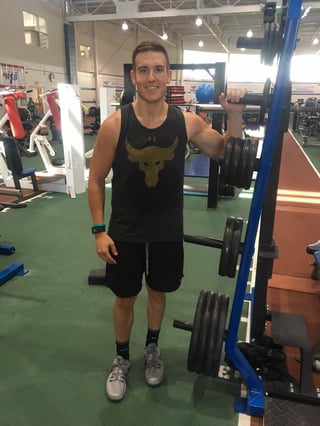
 As the new year is here, we start forming new goals for the next. I would like to share a story of a member who has worked incredibly hard through 2015 and 2016, has crushed all of the weight loss and fitness goals that he set and then some, and who has transformed himself completely in front of everyone who has seen him.
As the new year is here, we start forming new goals for the next. I would like to share a story of a member who has worked incredibly hard through 2015 and 2016, has crushed all of the weight loss and fitness goals that he set and then some, and who has transformed himself completely in front of everyone who has seen him.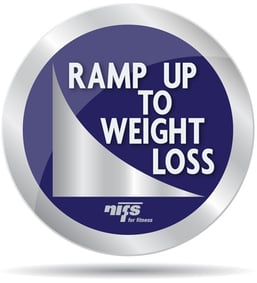
 Hopefully you are off to a solid start on your 2017 goals. I would venture to say that many are as we are still in the first month. But if you haven’t started to put those goals into action yet, it’s not too late!
Hopefully you are off to a solid start on your 2017 goals. I would venture to say that many are as we are still in the first month. But if you haven’t started to put those goals into action yet, it’s not too late!  Maybe one of your goals was to complete your first 5K or spring half-marathon. Now is the time to put those goals into action. Join us for our
Maybe one of your goals was to complete your first 5K or spring half-marathon. Now is the time to put those goals into action. Join us for our 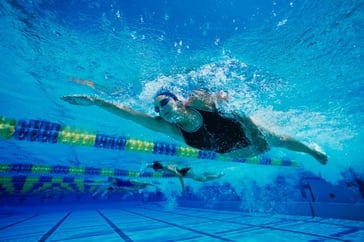 Nothing sounds more dreadful to me than putting on my suit to jump into the pool to do some lap swimming on a sub-20-degree winter day (unless, of course, it’s a belly-smacker challenge—then I’m in!). But with the vast benefits that come from swimming, the draw tends to be a little bit enticing (and here are some ideas for
Nothing sounds more dreadful to me than putting on my suit to jump into the pool to do some lap swimming on a sub-20-degree winter day (unless, of course, it’s a belly-smacker challenge—then I’m in!). But with the vast benefits that come from swimming, the draw tends to be a little bit enticing (and here are some ideas for 
 New year? Yes. Weight-loss goal? Yep. Team competition? Sign me up! It’s time to get ready for our 7
New year? Yes. Weight-loss goal? Yep. Team competition? Sign me up! It’s time to get ready for our 7
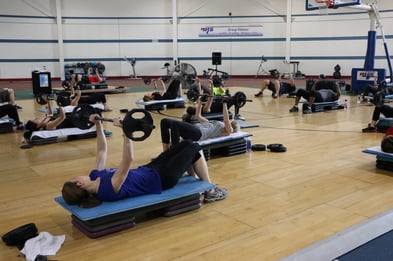 January’s group fitness class of the month is
January’s group fitness class of the month is 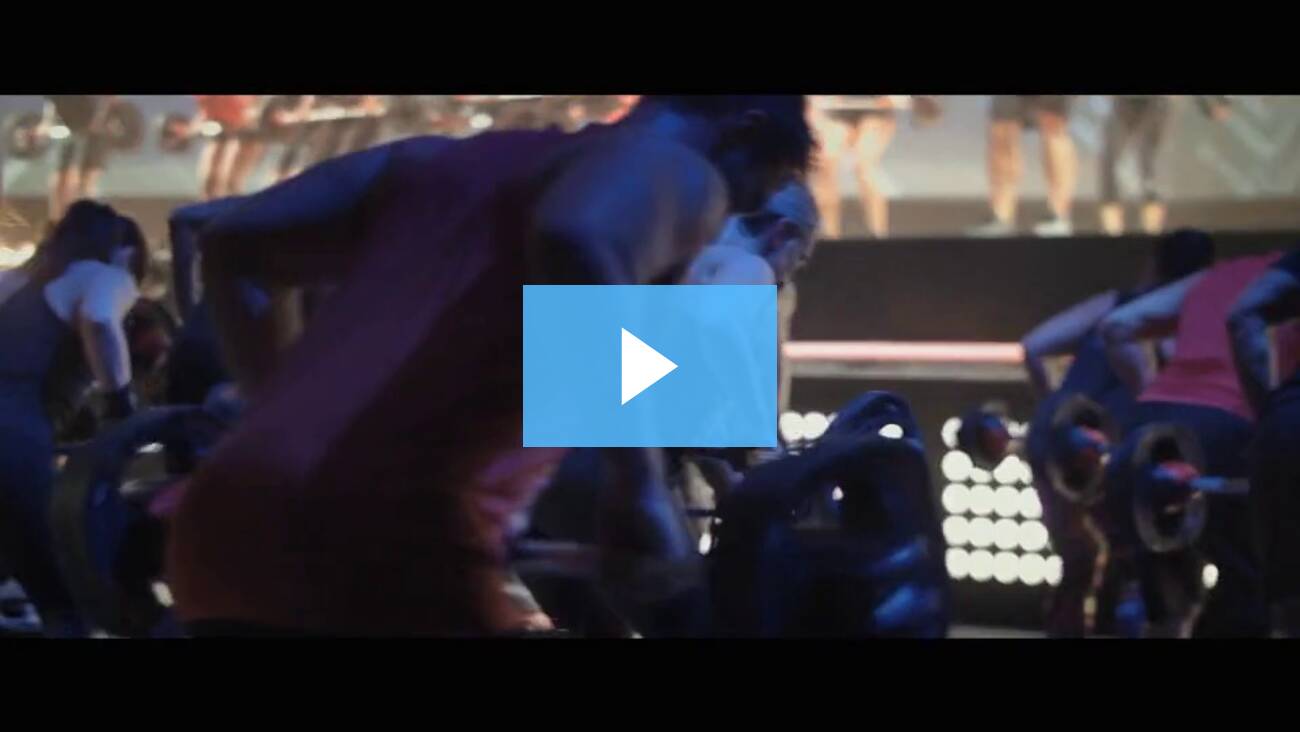
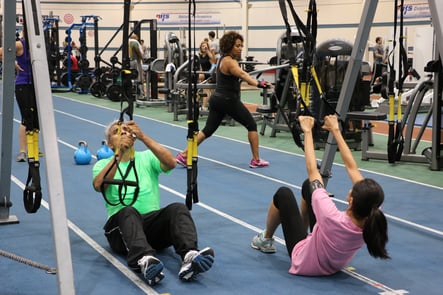 When most of us hear the personality type words
When most of us hear the personality type words 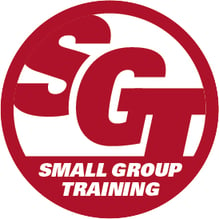
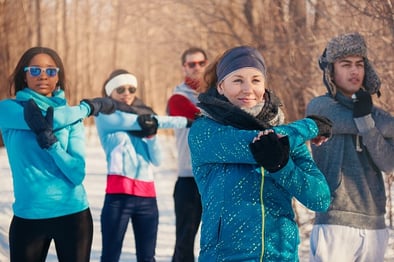 Even though I grew up in a northern snow belt along the Great Lakes, cold weather is not my thing. In fact, I really don’t like anything about it. And often along with the winter blues comes a decrease in health and fitness due to the lack of motivation. To counteract that feeling, let’s look at ten tips that can help you be healthier this winter.
Even though I grew up in a northern snow belt along the Great Lakes, cold weather is not my thing. In fact, I really don’t like anything about it. And often along with the winter blues comes a decrease in health and fitness due to the lack of motivation. To counteract that feeling, let’s look at ten tips that can help you be healthier this winter.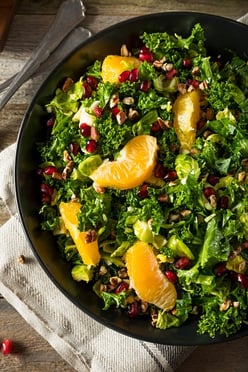 Are you uninspired on the vegetable front once the weather turns cold and the local fresh produce is no longer available? Luckily there are some hearty winter vegetables that I challenge you to try: Brussels sprouts, cauliflower, and kale. These whole foods will add some variety to your current lineup—and help you get the nutrition you need more easily. Below are recipes to try.
Are you uninspired on the vegetable front once the weather turns cold and the local fresh produce is no longer available? Luckily there are some hearty winter vegetables that I challenge you to try: Brussels sprouts, cauliflower, and kale. These whole foods will add some variety to your current lineup—and help you get the nutrition you need more easily. Below are recipes to try.